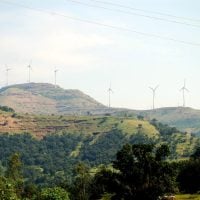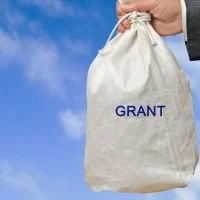The International Clean Energy Accelerator Funds (ICEAF) represent a significant opportunity for organizations dedicated to advancing clean energy solutions. These funds are designed to support innovative projects that aim to reduce carbon emissions, enhance energy efficiency, and promote sustainable energy practices globally. By providing financial backing, ICEAF enables NGOs and other entities to implement transformative projects that can lead to substantial environmental benefits.
Understanding the scope and objectives of these funds is crucial for any organization looking to secure funding. ICEAF is not just about financial support; it also fosters collaboration among various stakeholders, including governments, private sector players, and civil society organizations. This collaborative approach ensures that funded projects are not only innovative but also practical and scalable.
By tapping into the expertise and resources of diverse partners, organizations can enhance their project designs and increase their chances of success. Therefore, a thorough understanding of ICEAF’s mission and operational framework is essential for NGOs aiming to align their projects with the fund’s goals. Are You Working on Solar Innovation or Clean Energy Access? Join us to receive updates.
Key Takeaways
- International Clean Energy Accelerator Funds provide financial support for clean energy projects
- Eligibility criteria and requirements vary by fund and may include project location, technology type, and impact metrics
- The application process typically involves submitting a detailed project proposal and supporting documentation
- Gathering necessary documentation and information may include financial statements, project plans, and environmental impact assessments
- Crafting a compelling project proposal involves clearly articulating the project’s goals, impact, and feasibility
Researching Eligibility Criteria and Requirements
Before diving into the application process, it is vital to research the eligibility criteria and requirements set forth by ICEAF. Each funding opportunity may have specific guidelines regarding the types of projects that qualify for support, the geographical focus, and the target beneficiaries. Organizations must carefully review these criteria to ensure that their proposed projects align with ICEAF’s objectives.
This step is crucial as it can save time and resources by preventing organizations from pursuing funding for projects that do not meet the necessary standards. In addition to project eligibility, organizations should also consider their own qualifications. This includes assessing their capacity to manage funds, implement projects effectively, and report on outcomes.
Many funding bodies require a proven track record of successful project implementation, so NGOs should be prepared to demonstrate their experience and capabilities. By thoroughly understanding both project and organizational eligibility requirements, NGOs can position themselves more effectively in the competitive funding landscape.
Identifying the Application Process

Once eligibility has been established, the next step is to identify the application process for ICEAF funding. This process typically involves several stages, including an initial concept note submission, a full proposal development phase, and possibly a final presentation or interview. Each stage has its own set of requirements and timelines, so it is essential for organizations to familiarize themselves with these details early on.
Organizations should also take note of any specific formats or templates required for submissions. Many funding bodies provide guidelines on how to structure proposals, including sections on project objectives, methodologies, budgets, and expected outcomes. By adhering to these guidelines, NGOs can present their ideas in a clear and organized manner, increasing their chances of making a positive impression on reviewers.
Additionally, understanding the timeline for each stage of the application process allows organizations to plan their efforts effectively and allocate resources accordingly.
Gathering Necessary Documentation and Information
A successful application hinges on the ability to gather all necessary documentation and information in a timely manner. This may include organizational documents such as registration certificates, financial statements, and previous project reports. Additionally, NGOs should prepare any relevant data or research that supports their project proposal.
This could involve market analysis, feasibility studies, or case studies from similar projects that demonstrate potential success. Moreover, engaging stakeholders early in the documentation process can be beneficial. This includes partners who may contribute to the project or beneficiaries who will be impacted by it.
Their input can provide valuable insights that strengthen the proposal and demonstrate community support for the initiative. By compiling comprehensive documentation and involving key stakeholders, organizations can create a robust application that showcases their preparedness and commitment to the proposed project.
Crafting a Compelling Project Proposal
Crafting a compelling project proposal is perhaps one of the most critical steps in securing funding from ICEAF. A well-structured proposal should clearly articulate the project’s objectives, methodologies, expected outcomes, and budgetary needs. It is essential to present a logical flow of ideas that guides reviewers through the proposal while highlighting the project’s significance in addressing clean energy challenges.
To make the proposal stand out, organizations should incorporate storytelling elements that resonate with reviewers. This could involve sharing personal anecdotes from beneficiaries or illustrating the potential impact through vivid examples. Additionally, using data and statistics can bolster claims about the project’s feasibility and expected outcomes.
A compelling narrative combined with solid evidence creates a persuasive case for funding that can capture the attention of decision-makers.
Demonstrating the Impact of Your Clean Energy Project

Demonstrating the potential impact of a clean energy project is crucial for gaining support from ICEAF. Organizations should clearly outline how their project will contribute to reducing carbon emissions, improving energy access, or enhancing sustainability in specific communities or regions. This involves setting measurable goals and defining key performance indicators (KPIs) that will be used to assess progress throughout the project lifecycle.
Furthermore, it is beneficial to consider both short-term and long-term impacts. While immediate benefits may include increased energy efficiency or reduced costs for beneficiaries, long-term impacts could encompass broader societal changes such as improved public health or economic development through job creation in the clean energy sector. By presenting a comprehensive view of potential impacts, organizations can effectively communicate the value of their projects to funders.
Understanding the Review and Selection Process
Understanding the review and selection process is essential for organizations seeking funding from ICEAF. Typically, proposals undergo a multi-stage review process involving technical assessments by experts in clean energy as well as evaluations based on alignment with ICEAF’s strategic priorities. Familiarizing oneself with this process can help organizations tailor their proposals to meet specific evaluation criteria.
Additionally, organizations should be prepared for feedback during this stage. Reviewers may request clarifications or additional information before making final decisions. Being responsive and open to constructive criticism can enhance an organization’s reputation and increase its chances of securing funding in future applications as well.
Understanding this process not only prepares organizations for potential outcomes but also helps them refine their proposals based on reviewer expectations.
Preparing for Potential Interviews or Presentations
In some cases, shortlisted applicants may be invited to participate in interviews or presentations as part of the final selection process. This stage provides an opportunity for organizations to further elaborate on their proposals and address any questions or concerns raised by reviewers. Preparation is key; organizations should practice articulating their project’s goals, methodologies, and expected impacts clearly and confidently.
During interviews or presentations, it is important to engage with reviewers actively. This means being prepared to answer questions thoughtfully while also demonstrating enthusiasm for the project’s potential impact. Organizations should also be ready to discuss how they plan to manage risks associated with project implementation and how they will ensure accountability throughout the funding period.
A well-prepared presentation can leave a lasting impression on decision-makers.
Navigating the Funding Agreement and Contracting Process
Once funding has been awarded, navigating the funding agreement and contracting process becomes paramount. Organizations must carefully review all terms and conditions outlined in the agreement to ensure compliance with ICEAF’s requirements. This includes understanding reporting obligations, financial management protocols, and any restrictions on fund usage.
It is advisable for organizations to establish clear internal processes for managing funds effectively once they are received. This may involve setting up dedicated financial management systems or appointing specific team members responsible for overseeing budget adherence and reporting requirements. By proactively addressing these aspects of fund management, organizations can minimize risks associated with non-compliance and ensure smooth project implementation.
Implementing and Reporting on the Funded Project
The implementation phase is where plans turn into action. Organizations must execute their projects according to the timelines and methodologies outlined in their proposals while remaining adaptable to unforeseen challenges that may arise during implementation. Regular monitoring of progress against established KPIs is essential for ensuring that projects stay on track.
Reporting on project outcomes is equally important as implementation itself. Organizations should maintain transparent communication with ICEAF regarding progress updates, challenges faced, and any adjustments made along the way. Comprehensive reporting not only fulfills contractual obligations but also provides valuable insights that can inform future projects and funding applications.
Leveraging Success for Future Funding Opportunities
Successfully securing funding from ICEAF can open doors to future opportunities for NGOs focused on clean energy initiatives. Organizations should leverage their achievements by documenting successes through case studies or impact reports that highlight key outcomes achieved during project implementation. Sharing these successes through various channels—such as social media platforms, newsletters, or conferences—can enhance visibility within the sector.
Additionally, building relationships with funders based on transparency and accountability can lead to ongoing support for future projects. Engaging with ICEAF representatives during networking events or industry conferences can help organizations stay informed about new funding opportunities while also showcasing their commitment to advancing clean energy solutions. By strategically leveraging past successes, NGOs can position themselves favorably for future funding endeavors while continuing to contribute positively to global clean energy goals.









































